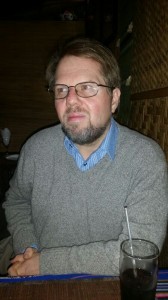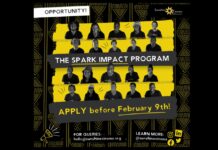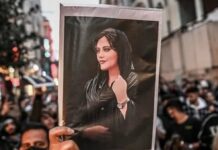In the Weekly Dissident today, MPHUTLANE WA BOFELO talks to poet Gary Cummisky, a self described “Dada-surrealist-madhouse screamer†who believes South Africa needs a stronger alternative culture.

MwB: Who is Gary Cummiskey and what is his philosophy of life?
GC: I am a poet, writer and publisher. I have had several chapbooks of poetry published over the past 20 years, the most recent being Romancing the Dead (Tearoom Books, Stockholm, 2010), Sky Dreaming (Graffiti Kolkata, Kolkata, 2012) and I Remain Indoors (Tearoom Books, Stockholm, 2013).
My debut collection of short stories, Off-ramp, was published in 2013. My poems have been translated into Bangla, French and Greek. I am currently the editor of the poetry journal New Coin, which is published by the Institute for the Study of English in Africa at Rhodes University.
My philosophy of life? Go your own way. Be an independent voice. Keep away from the lies and the marketing mantras. Keep away from the herd. And as Henry Miller advised Lawrence Durrell: ‘They’re going to shit on you anyway, so have your say first.’
MwB: Elsewhere you refer to yourself as an underground poet. What do you mean by this?Â
GC: By underground I mean outside the mainstream of poetry. And considering that poetry itself is a marginalised form, I guess it means I am on the margin of the margin. My poetry tends to be surrealistic and that sets me as a voice apart. I don’t write the sort of poetry that wins prizes and applause, but that is okay, I am not writing to win prizes or applause. I have also been called an alternative poet, a post-beat poet and a shamanic surrealist. I once referred to myself as a dada-surrealist-madhouse screamer, which is probably the closest to where I’m at.
MwB: It seems like you are a great admirer of the late South African beat poet, Sinclair Beiles. What is it about him that stands out for you and what influence has he had on your work and life?
![Sinclair Beiles [wikimedia images]](http://www.thedailyvox.co.za/wp-content/uploads/2014/09/Sinclair-Beiles-wikimedia-images.jpg)
GC: I first encountered Sinclair Beiles’s name back in 1991, one night in Yeoville. I was walking past a bookstore and there was a clipping of a review of Beiles’s selected poems, A South African Abroad, which has been published in California. I was astonished by what I read about his life – that he had mixed with the US Beat poets and also been a part of the European avant-garde scene in the 1960s. I have been an admirer of the Beats since I was teenager, and Beiles had collaborated with William Burroughs, Gregory Corso and Brion Gysin on Minutes to Go, a collection of cut-ups.
The cut-up technique originated among the Dadaists, and the Dadaist poet Tristan Tzara in particular was admired by Beiles, as were the surrealists, and I have also admired the Dadaists and surrealists. So there were common grounds of influence. I see in Beiles’s poetry elements of magic, the marvellous, of discovery and astonishment. There is always a sense of wonder, of seeing. He had quite a painterly eye. In fact, he also did watercolours. With Eva Kowalska, I edited a collection of writings about Beiles called Who was Sinclair Beiles?, which was published in 2009. I am proofing a revised and expanded version of that book now, and it should be out by the end of 2014. I run a blog called Who was Sinclair Beiles?
MwB: What is Dye Hard Press about? Â Â
GC: I founded Dye Hard Press, a small part-time publishing venture, in 1994. Since then I have published about 30 titles, mainly poetry, including work by Alan Finlay, Philip Zhuwao, Khulile Nxumalo, Kobus Moolman, Allan Kolski Horwitz, Arja Salafranca and Gail Dendy. Through Dye Hard Press I also published two short-lived literary journals – Atio and Green Dragon. The seventh and final issue of Green Dragon was supposed to be a short-fiction special, but it was so big that it morphed into a short-fiction anthology in its own right, called The Edge of Things, edited by Arja Salafranca. I am a champion of the anti-bestseller.
While editing New Coin I have put Dye Hard Press on hold, with the exception of the reprint of the Beiles book. I also run a blog called The Dye Hard Interviews.
MB: What is your understanding of ungovernable, underground, dissident, alternative, avant-garde, rebel, revolutionary; anarchist? Where and how do you place yourself in there? What put you there, what drives you there? What do you do there and what do you hope to achieve? What is\are your main instrument(s)\weapon(s) and medium (s) and why did you choose that particular instrument\weapon\medium?
GC: Ungovernable? Do we really want things to be ungovernable – do we really want social and economic chaos? Having said that, I realise some might argue that such chaos already exists under the guise of order. Underground? Certainly. Dissident? Always – it’s almost essential. Alternative? Definitely. In South Africa we need a stronger alternative culture. Avant-garde? Maybe that’s become a rather dated and inadequate phrase? Rebel? As in Camus’s definition of the rebel, yes. Revolutionary? I quote from an old Western movie: ‘From afar the revolution looks like a goddess, but up close you realise she is just a whore.’ Anarchist? Definitely, and being anarchistic enough to reject anarchism.
Where would I place myself? Underground, alternative, dissident and anarchist. But I am suspicious of labels.
What drives me to those spaces? A disdain for the market-orientated mainstream.
What do I hope to achieve? No idea, and if I did, I probably wouldn’t be answering this questionnaire.
My main instrument/weapon? The imagination. Mediums? Writing and art. Why those particular mediums? Probably because I can’t play a musical instrument. I wouldn’t mind becoming a filmmaker, though.
MwB: If you were to write a manifesto for the anarchist\ underground\ dissident\ alternatives\ rebels\ revolutionaries, what would it say?
GC: Don’t follow leaders and don’t read manifestoes.

![Gary Cummiskey Off Ramp [kaganof blog]](https://www.thedailyvox.co.za/wp-content/uploads/2014/09/Gary-Cummiskey-Off-Ramp-kaganof-blog.jpg)







